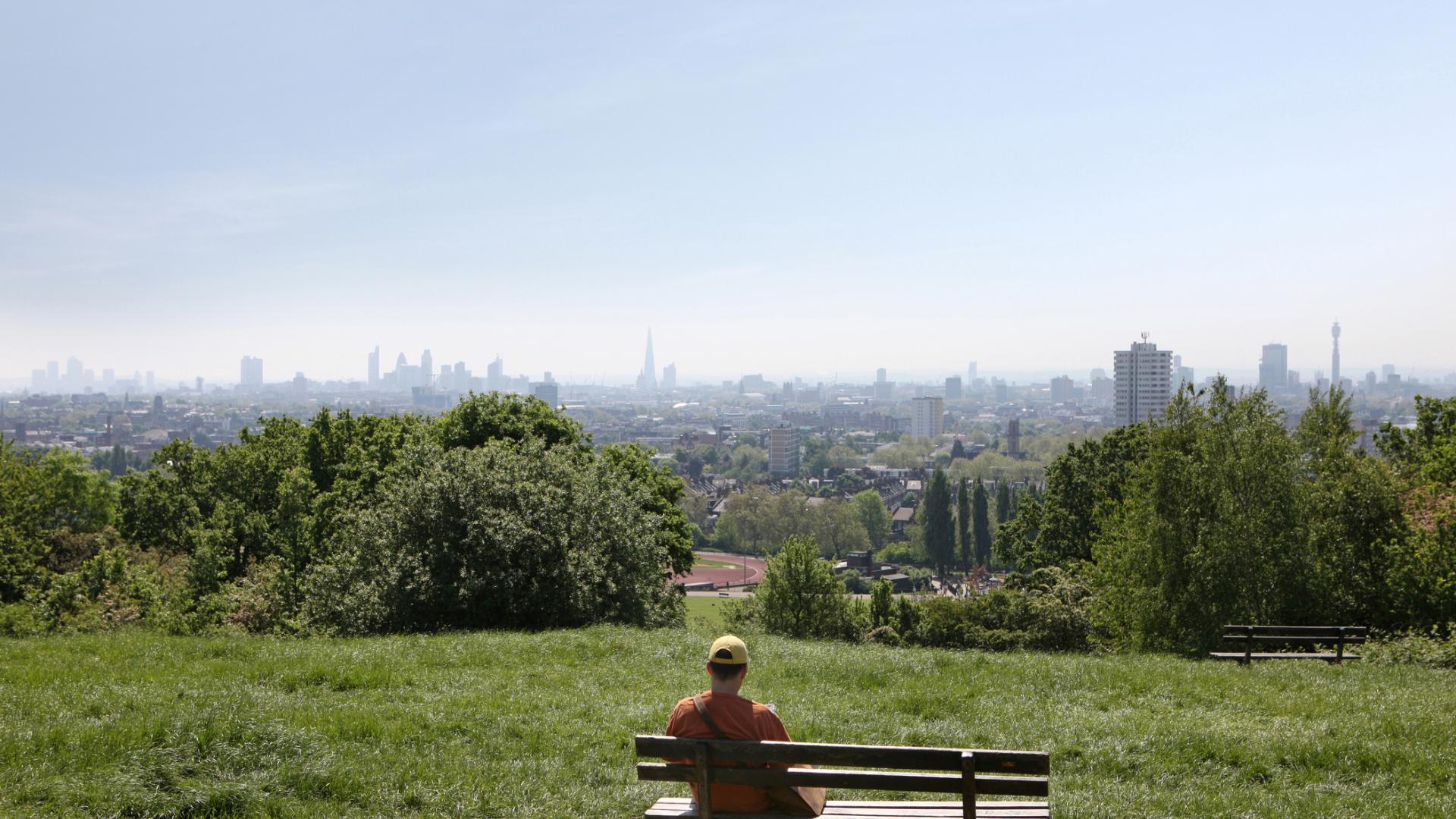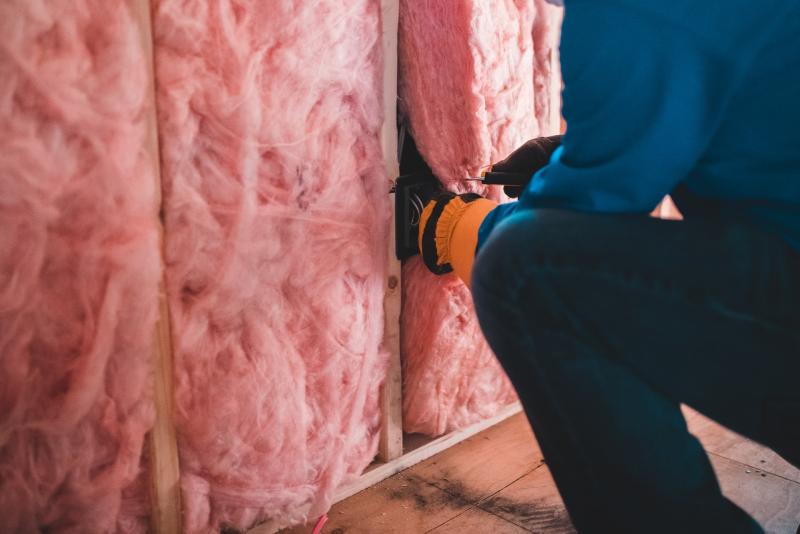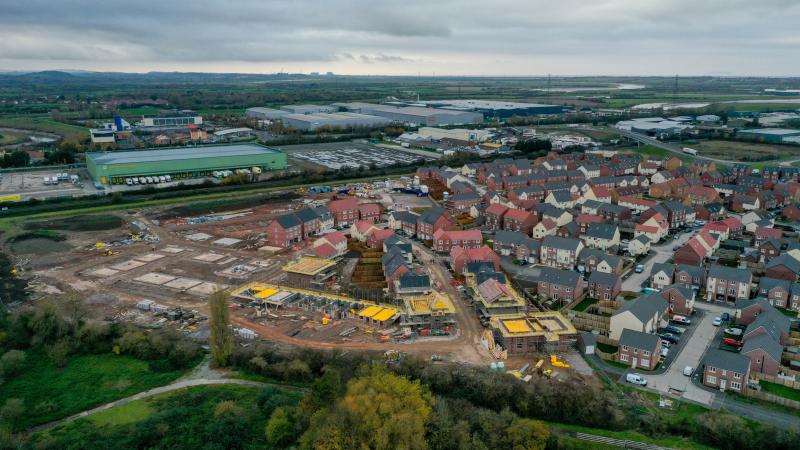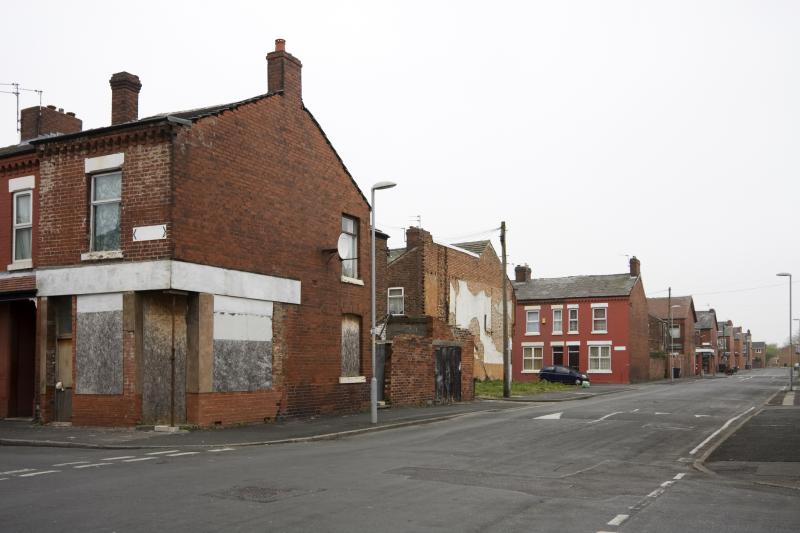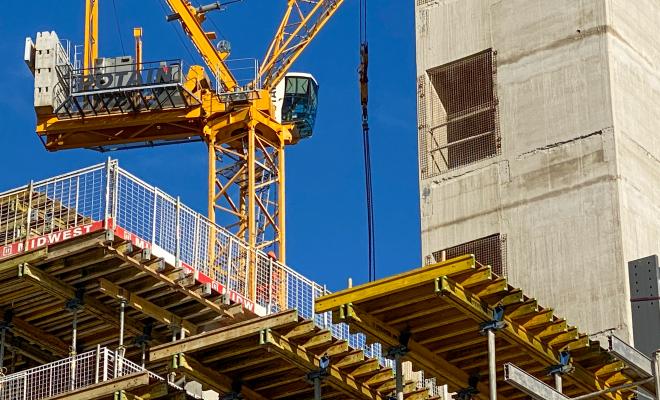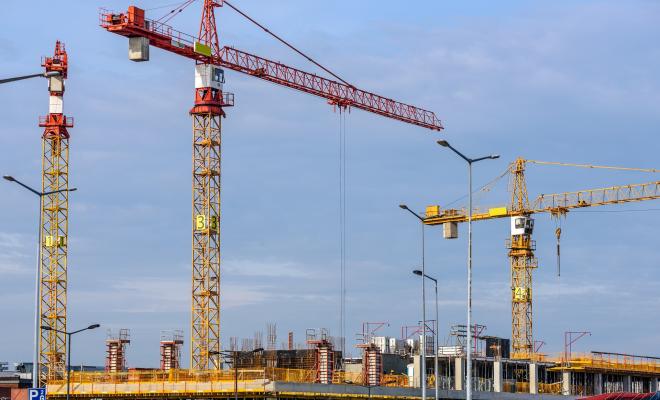Sandra Bell10 May 2022
The government has now published its Levelling Up and Regeneration Bill (LURB), but what does "levelling up" really mean? Will the government’s plans help the people who need it most, now they're facing the added pressure of living cost rises? Here I set out 5 tests for what levelling up must deliver and some thoughts on how the government’s approach matches up.
5 keys to levelling up
The aims of the Levelling Up White Paper (LUWP) – including ending geographical inequalities – are laudable. It's unacceptable that there’s a decade difference in life expectancy depending where people live in the UK and that people in some parts of the country are much less likely to have the kind of skills needed to get a job with decent pay. But does the government have an adequate response? On current evidence I would say no.
A huge flaw in the government’s approach so far is the lack of policy join-up. People living in the most deprived areas are often the most vulnerable to the threats of a changing climate and the least likely to benefit from natural green spaces. The white paper nods to these issues but doesn’t properly integrate them, nor does the LURB, despite the government's admission that lack of policy coordination was a key reason for the failure of previous approaches to levelling up.
The planning system is an essential tool in the levelling up toolbox, as well as being crucial to delivering on the UK’s climate targets.
There should be a new legal purpose for planning that promotes long-term sustainable development to reinforce positive outcomes from planning decisions in the interests of the nation’s health, safety and wellbeing. But neither the white paper or the bill set out a clear, positive proposal to reform the planning system in a way that provides strategic joined up solutions.
1. Inequalities
Levelling up must tackle the worst inequalities first
It makes sense to follow what the data tells us and start tackling inequalities in areas that most need it, like those that have suffered from a long-term lack of investment.
However, there will also be communities suffering deprivation within generally wealthier areas, including in the countryside. And people most affected can include non-geographic communities such as young people, people of colour and future generations.
There also needs to be a focus on the communities and households that are most vulnerable to climate change and energy price shocks. As the cost of living rises – exacerbated by the war in Ukraine – decisions made on energy to help the most vulnerable communities are more important than ever. Cutting energy use by insulating homes and boosting supplies of renewable energy will be the best ways to tackle fuel poverty and energy security.
Even though UK communities are the main focus of the LUWP, we should also be address the negative impacts of UK consumption and activities on overseas communities. Policy making and investment that doesn't consider the impact on all communities suffering inequalities risks making impacts worse.
How is the government doing?
Greater recognition of spatial inequalities is overdue, so government commitments to hardwire spatial considerations into government decision-making are welcome – but promises must be followed by action.
Although the LUWP recognises that differences are often hyper-local where differences within regions and cities are often larger than differences between regions, it doesn't address this adequately in its proposed measures.
It does not do enough to address inequalities suffered by particular groups of people across the UK - inequalities need to be tackled at a neighbourhood level. While the LUWP recognises that inequality needs to be addressed, it's unclear how the government intends to do this in any targeted way. For example, as demonstrated in research by Friends of the Earth, people of colour have less access to green space – including in London and the South East.
Nor has the government outlined how it will ensure fairness for future generations or overseas communities (who could be negatively impacted by decisions made in the UK).
2. Climate crisis
Levelling up must be linked to tackling the climate crisis
The government has accepted that it’s essential to reduce carbon emissions to stay within the limits of a safe climate. Policies aimed at levelling up must be linked to the UK’s climate targets. This is integral to tackling inequalities, because the people most affected by climate breakdown are those least responsible for causing emissions, including future generations.
Emissions per capita are regionally concentrated in areas home to the largest emitting industrial sectors, which include some of the most "left-behind" places. These industrial centres should benefit from employment and export opportunities created by the transition to Net Zero.
New investment in skills training and ambitions for increasing employment should focus on the jobs that will be essential to meet UK’s climate and nature targets as well as providing opportunities for people in "left-behind" places to have a positive future where they live. Levelling up should include tackling youth unemployment in a way that gives young people high quality long-term jobs in sustainable industries and helps workers transition from high carbon industries to jobs in local low carbon and circular economies.
Planning is a key policy area where better integration is needed. Every decision for new development should be compatible with the government’s carbon budget, which includes ending new fossil fuel developments gaining permission through the planning system. This will require the government to properly align its policy aims on levelling up, net zero and nature in the planning system (in legislation and the National Planning Policy Framework).
How is the government doing?
Despite pointing to the huge opportunity for the net zero transition to benefit the "left-behind", it's missing an opportunity to provide a massive boost to green jobs. The white paper lacks a clear focus on reskilling the UK workforce for the jobs of the future, including retrofitting our homes and restoring nature.
Although most of the initiatives aren't new, some are welcome - such as encouraging investment in offshore wind and electric vehicle (EV) manufacture in specific locations. These are essential to cutting carbon emissions and can create jobs in places transitioning from high carbon economies. But cutting carbon needs to be integral to all investment and to reach every community in the UK rather than just focusing on flagship projects. Every community needs urgent roll out of retrofitting to make houses more energy efficient, new high quality green spaces, EV infrastructure, local renewable generation (including onshore wind) and more safe walking and cycling routes.
Some proposals in the LUWP work against tackling climate change – widening roads and reducing air passenger duty on domestic flights will make it harder to meet carbon reduction targets and do nothing to help those on low incomes. And the LURB fails to properly align planning with climate change goals. It will need amending to do so. Overall, instead of properly integrating climate aims into the levelling up agenda, there's too much reliance on the Net Zero Strategy which is currently not fit for purpose having not quantified how policies will be achieved and by when.
3. Healthy environment
Levelling up should ensure a safe, healthy and accessible local environment for all
For everyone to live in a healthy environment and to meet the government’s aims on life expectancy and wellbeing, access to nature-rich green spaces and clean air are essential. But people of colour are less likely to have good access to green space and deprived communities are more likely to suffer dangerous levels of air pollution where they live.
Levelling up legislation is an opportunity to turn development from a major driver of nature loss to a major driver of nature gain, reversing the trend for new housing to include a dwindling amount of green space. Strong legal standards for access to nature would ensure that the associated health and wellbeing benefits of green and blue spaces are available to all neighbourhoods.
It’s also vital to protect existing nature-rich places. The Queen’s speech promises “as a benefit of Brexit” to improve protection for the natural environment in planning by changing environmental assessment rules. Any new environmental impact assessment process must be stronger, not weaker, than what we already have.
Places need to be safe and accessible for everyone. That includes being able to get to key local services via accessible and affordable public transport or safe walking and cycling routes. These are basic infrastructure needs that should be fundamental to levelling up.
Safe future-proof places need to be resilient to extreme weather. From flood protection to cooling green infrastructure, the needs of vulnerable communities must be prioritised.
How is the government doing?
The executive summary of the LUWP emphasises “pride in place” as a significant focus area. But it places too much emphasis on housing numbers, owning a house and the way places look and not enough on ensuring that people live in a safe and healthy environment with basic infrastructure that reflects and meets people’s needs.
For example, there's a missed opportunity to commit to planning reform to ensure that new housing is located in places that are accessible to people who don’t own cars, and to encourage more walking, cycling and public transport. Most new development is still car dependent. This is an omission given that active travel can also deliver on the government’s health aims and locating housing close to services like schools is a key part of fostering a feeling of community.
There's also an imbalance between the emphasis on certain individual behaviours to improve health (smoking rates, alcohol intake and aspects of poor diet) and the lack of action on environmental health factors. Even though the White Paper includes environment as a key factor influencing wellbeing, this is not reflected in the proposed metrics to measure progress on health and wellbeing
The omissions of measures to improve natural capital is acknowledged by the LUWP and this is apparent from the lack of focus on the importance of a healthy environment throughout the paper. Although the LUWP promises to "radically expand investment in parks", new funding will only benefit 30 existing parks.
There also appears to be little understanding of the role that extensive investment plays in the success of public transport, walking and cycling for social inclusion. Although the White Paper recognises the challenges facing the high proportion of people without access to a car, it lacks adequate solutions at the local level. Funding for buses set out in the LUWP is not new and nowhere near enough especially considering the history of cuts to bus services – only 31 places will benefit from funding for Bus Service Improvement Plans. Overall there's still too much focus in the White Paper on big rail projects [like the Integrated Rail Plan] and not enough on local public transport.
4. Local decision making
Levelling up should involve genuinely local decision-making
Levelling up should ensure that people have a say in what happens in their area and to co-design solutions, where appropriate. Special efforts need to be made to engage the disenfranchised, disillusioned and most impacted communities.
This requires local authorities to have the necessary powers and resources to engage their communities in the process. If engagement is genuinely not possible in some cases, there needs to be transparency in how decisions were made and why, to aid public trust.
Devolution deals need to happen in a way that improves local democracy because shifting some power to local areas does not in itself guarantee involvement of the people that live there. Local authorities will not be able to properly plan at neighbourhood level without the right vision and strategy at national or devolved levels. This includes ensuring link-up across policy areas.
How is the government doing?
Communities will be able to get involved in local design codes and potentially have a say in the kind of development they want in their local areas, via new ‘street votes’ - although what this means in practice is unclear. However, other proposed changes to planning go against community involvement. Local Plan-making is a key point of involvement for local people but the LURB as it stands makes Local Plans subservient to new National Development Management Plans giving local plan making a lower status than it has now. In addition, there will be further extension of permitted development rights (where development doesn't need planning permission and so no local consultation will take place). The proposal to allow more conversion of empty shops into homes is also likely to lead to poor quality housing. This has already happened when conversion has taken place under permitted development (evidence from a government commissioned review). And while the promised digitilisation of planning applications will make it easier for some people to engage, it may be a barrier to others.
The failure to fully align planning with climate targets means that communities may continue to have fossil fuel developments or fracking imposed on them, which is in conflict with the aim of properly engaging communities.
5. Proper resourcing
Levelling up should include proper resourcing for local government
Local authorities are best placed to understand the needs of their communities at a macro level and work with them to co-design solutions that deliver multiple benefits. Their role in delivering the levelling up aims is acknowledged by the LUWP. But delivery will depend upon genuine empowerment and stable long-term resourcing of local authorities and communities.
It's clear that current government funding for councils to tackle issues such as climate change and a green recovery from the pandemic is inadequate - given the decades of cuts and new burdens being placed on local authorities.
Long term stable funding is crucial to levelling up because local authorities and communities in the most "left-behind" places will be least able to tap into competitive funding.
How is the government doing?
The government acknowledges the problems associated with short-term competitive funding. It now needs to set out firm proposals and a timescale to change this across all government departments. It's hard to assess the adequacy of funding from the LUWP given that most of the funding it refers to is not new. The test will come in future funding commitments.
It's welcome that the Shared Prosperity Fund which will replace some EU funding will not be competitive. It could be used to retrofit housing, create green spaces or boost green skills. But as it has no clear focus on linking levelling up to tackling the climate crisis, there are no guarantees that councils will invest the money on joined-up solutions. .
And in reality, there's still a plethora of funding sources that local authorities have to navigate, many of which still require competitive bids. The LUWP lists 15 pots of money for local growth funding alone, each with their own burdensome reporting requirements.
Similarly, despite the LUWP promising ambitious action to address poor energy efficiency by targeting retrofit funding at the worst performing homes and those least able to pay, it only refers to existing funding which is fragmented and inadequate. This will leave funding for retrofitting housing disjointed, with no proposals for funding that would enable local authorities to tackle street- by-street upgrades across different tenures.
Local authorities need more powers to raise funds locally. For example a local public transport payroll levy, as is widely used in France, could help transform the accessibility and affordability of getting around in "left behind" places, allowing people without cars to access basic services.
A new proposed Infrastructure Levy would replace the Community Infrastructure Levy (used by local authorities to raise money from developers for local infrastructure), but it's unclear whether this will help or hinder local authorities to tackle inequalities and climate breakdown. These changes may even divert funding from affordable housing to other infrastructure. The planning system must ensure that the public reaps enjoyment and generates benefits from new developments. New Local Plans should set out public interest outcomes secured by infrastructure levies to ensure high quality design standards, transport infrastructure and affordable homes.
Some recommendations
The government has made a lot of commendable promises on levelling up, but leaves a lot of questions unanswered about how they'll be delivered.
Government commitments must include:
Funding
An end to competitive funding, instead ensuring local authorities have sufficient long-term and stable place-based funding to play their part in tackling inequalities, climate breakdown and restoring nature together, including:
- Support street-by-street loft and cavity insulation starting with fuel-poor neighbourhoods in local authorities across the country
- Invest £5.5 billion capital funding over 5 years to boost public access to green spaces, especially in areas lacking proper provision, together with £275 million in annual maintenance.
Green skills and jobs
- Create 250,000 green apprenticeships over the next three years.
Green space
- Legislate for all homes to have at least 0.5 hectares of green or blue space within 200 metres or within a 5 minute walk, and 500 hectares of wilder natural space within 10km, with robust criteria for quality and accessibility of that natural space.
Reform of the planning system with people, climate and nature at its heart
-
Seize the opportunity to build new consensus around the value of a democratic planning system ensuring people have a say at every stage of the planning process.
-
Reform the planning system so that all planning strategies, policies and decisions must be in line with the objectives and provisions of the Climate Change Act 2008, including the 2050 net zero carbon target and the detailed provisions of the Sixth Carbon Budget.
-
Development plan policies must prioritise the long-term climate resilience of communities, building the capacity of people and places to plan for, better protect, respond to, and recover from flooding, coastal change and extreme temperatures.
- Local plans should no longer be required to define areas for further fossil fuel extraction. Planning permission should not be granted for the extraction of coal, oil or gas unless in wholly exceptional circumstances.
- Not undermine the existing environmental assessment framework (EIA/SEA regulations) in favour of Environmental Outcomes Reports which would give the government extensive and potentially damaging powers to change environmental protections with limited scrutiny.
By the time the Levelling Up Bill passes into law, I hope that some of the flaws I've identified will have been addressed and poorer communities will genuinely benefit from this levelling up approach.


